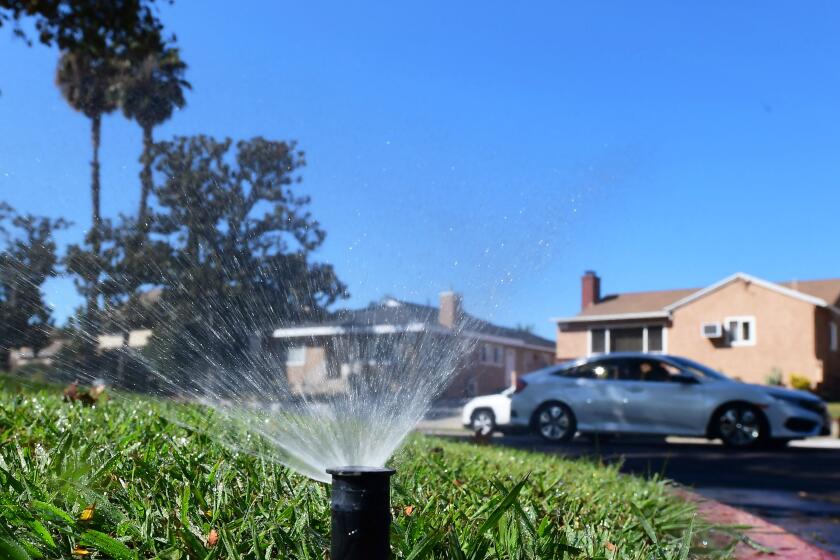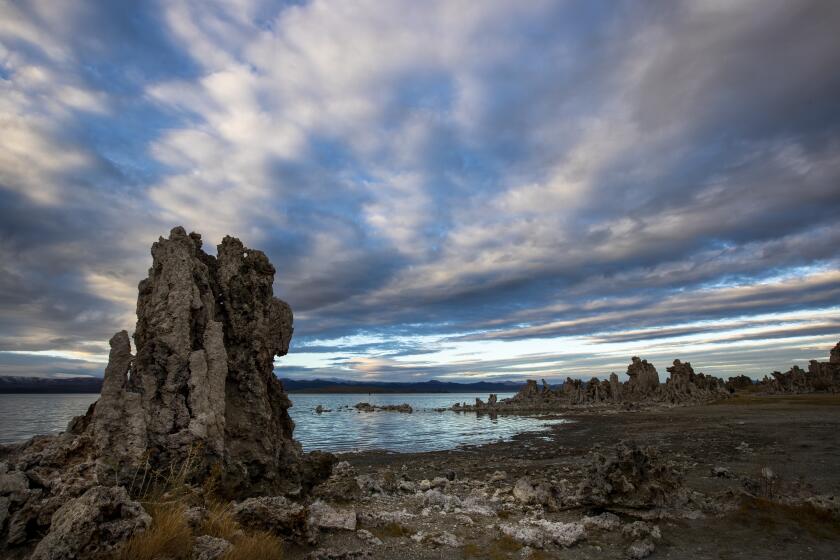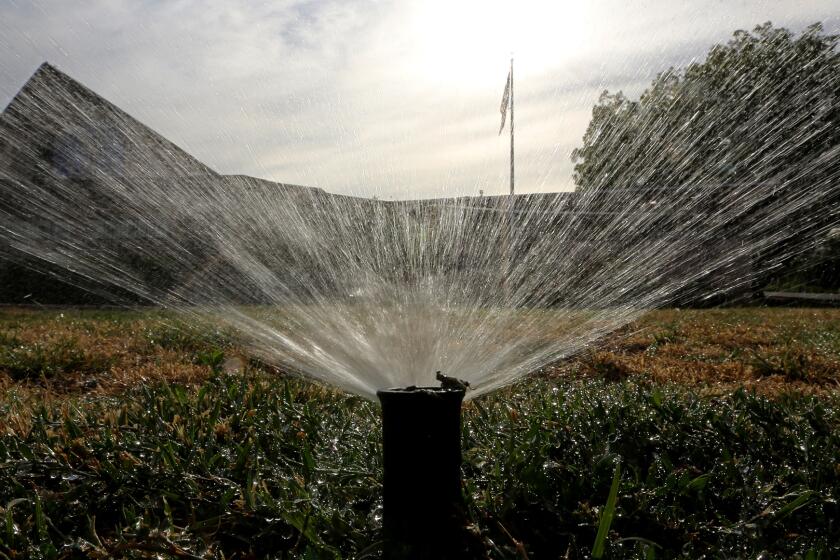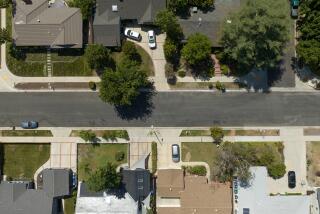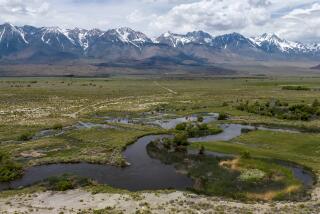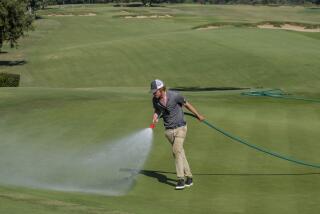Unprecedented water restrictions ordered as MWD declares water shortage emergency
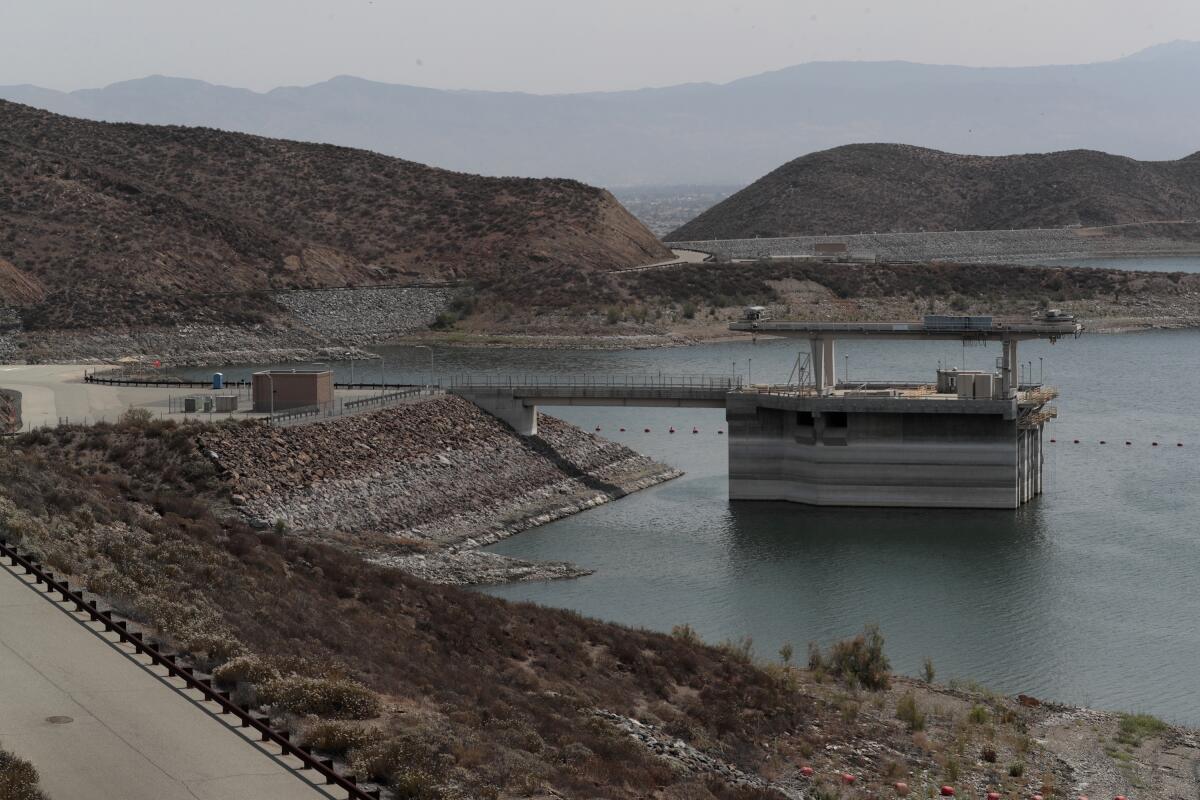
- Share via
Southern California officials on Tuesday took the unprecedented step of declaring a water shortage emergency and ordering outdoor usage be restricted to just one day a week for about 6 million people in parts of Los Angeles, Ventura and San Bernardino counties.
The outdoor watering restrictions will take effect June 1 under the decision by the Metropolitan Water District of Southern California and will apply to areas that depend on water from the drought-ravaged State Water Project.
“We are seeing conditions unlike anything we have seen before,” said Adel Hagekhalil, the district’s general manager. “We need serious demand reductions.”
The MWD’s board has never before taken such a step and the resolution adopted by the water wholesaler will bring the first widespread water restrictions imposed in Southern California during the current extreme drought.
California’s drought, now in a third year, has become the driest on record and has been intensified by hotter temperatures unleashed by climate change. With the state’s major reservoirs at low levels, the MWD has been left without enough water in parts of Southern California.
“These areas rely on extremely limited supplies from Northern California, and there is not enough supply available to meet the normal demands in these areas for the remainder of the year,” Hagekhalil said.
New Southern California drought rules limit outdoor watering to once a week in some areas. Here’s what you need to know.
The MWD board voted unanimously to adopt the emergency measures to “reduce non-essential water use” in certain areas. Cities and smaller water suppliers that get water from the MWD are required to start restricting outdoor watering to one day a week, or to find other ways to cut usage to a new monthly allocation limit.
Any water suppliers that fail to comply could face large fines from the MWD for exceeding their monthly allocations.
The State Water Project delivers water from the Sacramento-San Joaquin River Delta to farmlands and cities to the south. The project includes canals, pipelines, reservoirs and pumping facilities, which transport water to approximately 27 million Californians.
After a record dry start to 2022, California water officials slashed the project’s expected deliveries this year to just 5% of full allocations.
The water level at Mono Lake has fallen to a key threshold, prompting cuts in water exports by the Los Angeles Department of Water and Power.
Areas that depend heavily or entirely on the State Water Project include northwestern L.A. and Ventura counties, parts of the San Gabriel Valley and parts of the Inland Empire.
The MWD imports water from the State Water Project and the Colorado River, serving 26 public water agencies across six counties that supply 19 million people, about half the state’s population.
The district’s staff wrote that the measures are intended to conserve water supplies and “ensure that near-term human health and safety needs can be met.”
“We’re working together to solve what is a really, really tough and, quite frankly, unprecedented issue. None of us like what we’re doing. But we’re in a position where we’ve got to do it,” said Steve Blois, an MWD board member who represents Calleguas Municipal Water District. “The issue is, how are we going to get through this current drought without running out of water to serve the health and safety needs of our population? That has to be our No. 1 priority.”
Officials with Calleguas, which supplies water to a large portion of Ventura County, plan to meet to adopt measures in response to the emergency declaration. Anthony Goff, Calleguas’ general manager, said the measures are needed as the climate is “changing faster and in unexpected ways in terms of hydrology and the effect of temperature on snowpack.”
This year and the previous two have brought the region the lowest amount of water on record from the State Water Project, said Brad Coffey, the district’s manager of water resources. As local water suppliers adopt their reduction plans, Coffey said, the MWD will provide nearly $4.5 million to help with the costs of enforcement and other related programs.
Some of the area’s water suppliers have already been imposing restrictions. In western L.A. County, for example, Las Virgenes Municipal Water District has reduced its customers’ water budgets by 50%, with fines for violations.
Gov. Gavin Newsom in July called for Californians to voluntary reduce water use by 15%, but the state remains far from that goal. Last month, Newsom ordered urban water suppliers to implement more aggressive conservation measures, requiring them to activate “Level 2” of their local drought contingency plans to prepare for shortages. The governor also directed the state water board to consider a ban on watering “nonfunctional” grass at businesses and other properties.
During Tuesday’s meeting, managers of parks in Ventura County told the board they hoped the rules would not lead to a “one-size-fits-all” approach that would mean parks with dead grass. Hagekhalil responded that the district aims to implement the measures in a way that accommodates local cities’ and agencies’ ordinances and drought plans. But he also cautioned that more severe restrictions, including a possible total ban on outdoor irrigation, might be necessary if the drought persists.
Californians are well-acquainted with the need to save water. Here are some practical tips to cut your water use, plus a look at the big picture.
“If these plans have exceptions to preserve public sports fields or parks ... we intend to accommodate that,” Hagekhalil said. “The decision-making is at the local level. And we recognize that. However, it must be noted that if we have to drop to deeper stages, like a full outdoor irrigation ban, then local exceptions will understandably start to fall away.”
Some who called in to speak said they were concerned the water restrictions could lead to many dead trees. Peter Kraut, a Calabasas City Council member, called the restrictions “insane but not unexpected.”
“I’m appalled that a change this drastic is happening in such a short period of time,” Kraut said. “This plan will result not just in brown grass but in killing countless trees. The damage to our environment will take decades to repair. It will cost ratepayers millions of dollars to remove the dead trees and plant new ones.”
Others echoed the concerns about trees, saying as the water restrictions take effect, it will be important for local agencies and residents to have information about how to let grass go brown while keeping trees alive.
Tracy Quinn, an MWD board member who represents Los Angeles, said she hopes the district can provide information to member agencies and customers, as Las Vegas does, “to ensure that our trees are protected.”
“This isn’t just a dry period. There’s also extreme heat that’s going along with it, and we need to make sure that we can protect against heat island effect and heat-related illnesses,” Quinn said.
Other board members said they support the restrictions but also stressed it was important to help areas that rely heavily or entirely on the State Water Project to get access to other sources of water, such as Colorado River water.
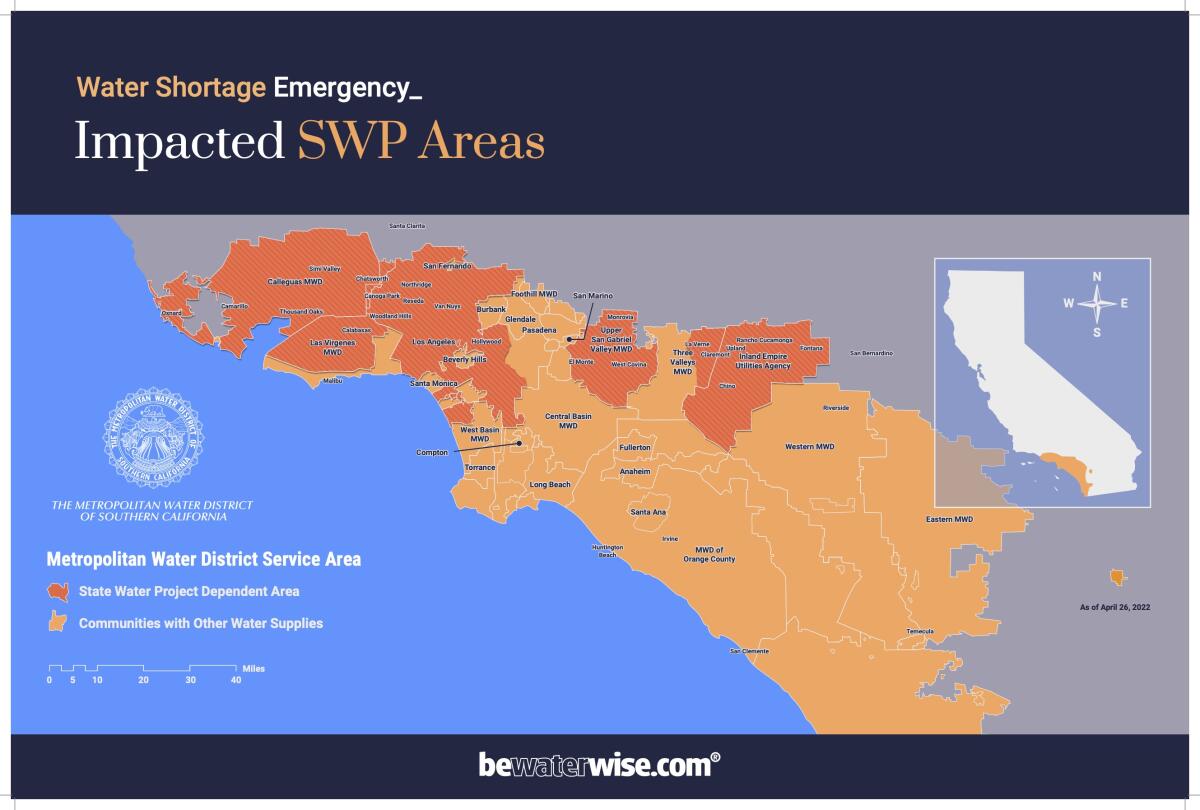
“Everyone’s in a drought. But the fact that only some of us are impacted by the actual water shortage today is a grave concern,” said Heather Repenning, a board member who represents Los Angeles. “And we really need to figure out a fix that is going to allow us to access storage in a way that is equitable.”
Hagekhalil said the MWD is working on infrastructure projects “to diversify and provide the necessary plumbing to move Colorado water to these areas” and also create alternative water sources.
As dams and global warming push endangered California salmon to the brink, a rescue plan is taking shape — and a tribe pushes for recovering their sacred fish.
Officials with the Los Angeles Department of Water and Power are considering their next steps based on the MWD’s shortage emergency declaration.
“LADWP has been closely tracking the policy recommendations considered by the MWD Board today. We will continue to work closely with City officials and MWD over the coming weeks,” Ellen Cheng, a DWP spokesperson, said in an email.
The city has had watering restrictions in place for more than a decade and currently allows outdoor watering three days a week.
“Additional water use restrictions should be balanced against the high level of conservation that has already been achieved by LADWP customers,” Cheng said.
In addition to water from the state project, Los Angeles receives water from the Eastern Sierra and the Colorado River.
The Colorado River, which supplies water to seven states and Mexico, is in a first-ever shortage. Its major reservoirs have declined to record-low levels.
Quinn said that given the extreme shortage on the Colorado River, she thinks it might be time to consider expanding water restrictions to other parts of Southern California.
More to Read
Sign up for Essential California
The most important California stories and recommendations in your inbox every morning.
You may occasionally receive promotional content from the Los Angeles Times.
